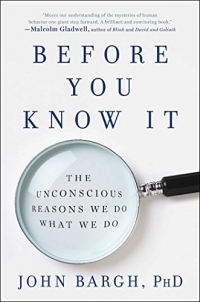Jeremy Adam Smith
UC Berkeley
We know in our gut when we’re hearing a good story—and research is starting to explain why.
Stories are told in the body.
It doesn’t seem that way. We tend to think of stories as emerging
from consciousness—from dreams or fantasies—and traveling through words
or images to other minds. We see them outside of us, on paper or on
screen, never under the skin.
(You still have problem with your financial? May be this is a solution: https://muslimpromo.com/?ref=8076)
 © jonapotkivanunk.hu
© jonapotkivanunk.hu
But we do
feel stories. We know in our gut when we’re hearing a good one—and science is starting to explain why.
Experiencing a story alters our neurochemical processes, and stories
are a powerful force in shaping human behavior. In this way, stories are
not just instruments of connection and entertainment but also of
control.
We don’t need the science of storytelling to tell a story. We do,
however, need science if we want to understand the roots of our
storytelling instinct and how tales shape beliefs and behavior, often
below conscious awareness. As we’ll discuss, science can help us to
defend ourselves in a world where people are constantly trying to push
our buttons with the stories they tell.
The better we understand how stories unfold in our bodies, the more
equipped we are to thrive in the story-rich environment of the
twenty-first century.
Punched in the gut
Imagine your attention as a spotlight. When someone tells you a story, they are attempting to control that spotlight. They are
manipulating you.
We all do this every day, all the time. You try to hold attention as
you tell a story to coworkers over coffee; I’m trying to hold your
attention as I tell the story of the science of storytelling.
There are many different ways to draw the spotlight of other people’s
attention—and all of them instinctively or deliberately tap into basic
human drives. Here, for example, is a very short story attributed to
Ernest Hemingway.
For Sale: Baby shoes, never worn.
How does this story make you feel? I can speak for myself: When I first
encountered it as an undergraduate, my attention was instantly captured.
And when I realized, after a beat, what it meant, I felt punched in the
gut.
The story works because it triggers our natural negativity bias—that
is, the hardwired human tendency to focus on the bad, threatening,
dangerous things in life. It specifically activates the fear and despair
we’d feel if our child died, even if we don’t yet have one of our own.
We’re really good at focusing the spotlight of our attention on what
might hurt us—or hurt those close to us, especially our children. What
happens in our bodies when we throw the spotlight on a threat? We get
stressed out.
And what’s stress? That’s a tool nature gave us to
survive lion attacks—in other words, stress mobilizes our body’s
resources to survive an immediate physical threat. Adrenaline pumps and
our bodies release the hormone cortisol, sharpening our attention and
boosting our strength and speed.
But unlike other animals, humans have the gift and the curse of being
susceptible to stress even when we don’t face a direct physical threat.
This we do by telling ourselves, and each other, stories. They are the
best way we have to communicate potential threats to other humans—and
help each other to prepare for overcoming those threats.
Most of us will never face a flesh-and-blood lion, yet in stories we
transform lions into potent symbols of beautiful death. That’s the
essence of many stories: facing and overcoming dangers, which will
persist, multiply, and mutate in our minds and, in some cases, become
metaphors for more-immediate dangers.
As Neil Gaiman writes in his novel
Coraline:
“Fairy tales are more than true: not because they tell us that dragons
exist, but because they tell us that dragons can be beaten.”
When someone starts a story with a dragon, they’re harnessing
negativity bias and manipulating the stress response, whether they
intend to or not. We’re attracted to stressful stories because we are
always afraid that it could happen to us, whatever “it” is—and we want
to imagine how we would deal with all the many kinds of dragons that
could rear up in our lives, from family strife to layoffs to crime.
But we don’t necessarily need dragons to capture attention, right? At
the very beginning of J.K. Rowling’s Harry Potter series, she slowly
introduces us to a babe, alone in the world, under constant threat. We
instinctively take the side of the “boy who lived” because at the
beginning of the story, he’s so vulnerable.
Most of the Star Wars films take
another approach, by trying to inspire a
sense of awe—the emotional reaction to something so vast we can’t immediately grasp it—which research shows triggers behaviors
associated with curiosity, like turning to other people for answers.
How stories unfold in our bodies
While authors can capture our attention in many different ways,
sooner or later a villain will appear and a conflict will develop.
Harry Potter and the Sorcerer’s Stone
may start gently, but Lord Voldemort looms in the background. As the
action rises and Harry’s society of witches and wizards slides toward
civil war, our attention sharpens and our bodies release more cortisol.
If that doesn’t happen, a story loses us. Our spotlight turns to
something else.
But cortisol alone isn’t enough to keep our bodies engaged with a
story. The conflicts in Harry Potter and Star Wars grab our
attention—and the settings can inspire awe and wonder—but they wouldn’t
involve us nearly as much if they didn’t also include characters we come
to care about.
As we see fictional characters interact, our bodies tend to release a neuropeptide called
oxytocin,
which scientists first found in nursing mothers. Oxytocin has
subsequently turned up in studies of couples and group-bonding—indeed,
we find oxytocin whenever humans feel close to each other, or even just
imagine being close. That’s why stories trigger oxytocin: When Princess Leia finally told Han Solo that she loves him in
The Empire Strikes Back, your body almost certainly released at least a trace level.
That’s not all that’s happening as we become involved in a story and its
characters. The brain activity of both storytellers and story listeners
starts to align thanks to
mirror neurons,
brain cells that fire not only when we perform an action but when we
observe someone else perform the same action. As we become involved with
a story, fictional things come to seem real in our bodies. The
storyteller describes a delicious meal and the listener’s mouth can
start to water. When the characters in the story feel sad, the
listener’s left prefrontal cortex activates, suggesting that they feel
sad as well.
As the plot thickens, the good author pushes the characters we care
about into conflict with the villain. Our palms sweat, we grip the hand
of the person next to us—who is likely having the same reaction. We
might feel the tension in our neck. Our body is braced for a threat, but
the threat is completely imaginary.
That’s when the storytelling miracle comes to pass: As the cortisol
that feeds attention mixes with the oxytocin of care, we experience a
phenomenon called “transportation.” Transportation happens when
attention and anxiety join with our
empathy.
In other words, we’re hooked. For the duration of the story, our
fates become intertwined with those of imaginary people. If the story
has a happy ending, it triggers the limbic system, the brain’s reward
center, to release dopamine. We might be overcome by a feeling of
optimism—the same one characters are experiencing on the page or screen.
Where do we end and where does the story begin? With the most intense, involving stories, it’s hard to tell.
How stories bring people together
 At the beginning of the series, Harry Potter is extremely vulnerable. This inspires protectiveness in the reader.
At the beginning of the series, Harry Potter is extremely vulnerable. This inspires protectiveness in the reader.
Why in the world would evolution grant us this
ability? Why would nature actually make us crave stories and make
transportation a pleasurable experience?
I’ve already suggested part of the answer: We need to know about
problems and how to solve them, which can enhance our survival as
individuals and as a species. Without a problem for the characters to
solve, there is no story.
But there might be other reasons. Recent
research suggests that this process of transportation in fiction
actually increases our real-life empathic skills. Studies published in
2013 and 2015 exposed people to literary fiction or high-quality TV—and
then gave them the “mind in the eyes” test, in which participants look
at letterboxed images of eyes and try to identify the emotion behind
them. In the
2015 study, participants who watched
Mad Men or
The Good Wife scored significantly higher than did those who watched documentaries or simply took the test without first watching anything.
In other words, the empathic skills we build with stories are
transferrable to the rest of our lives: They are advantageous in
real-world situations where it helps to have insight into what another
person is thinking or feeling—situations like negotiating a deal, sizing
up a potential enemy, or understanding what our lover wants.
All these qualities make stories adaptive, in evolutionary terms.
They’re not just nice to hear. They can actually increase our chances of
survival.
How stories change behavior
Research finds that stories shape our behavior in other ways that can help us to thrive.
Study after study after study finds that stories are far more persuasive than just stating the facts. For example,
one found
that a storytelling approach was more effective in convincing
African-Americans at risk for hypertension to change their behavior and
reduce their blood pressure. A
study of low-performing science students found that reading stories of the struggles of famous scientists led to better grades. A
paper published last year found that witnessing acts of altruism and heroism in films led to more giving in real life.
Indeed, stories actually seem to trigger the neurochemical processes
that make certain kinds of resource-sharing possible. This biological
activity can lead to profound behavioral changes, including costly acts
of altruism.
When Claremont Graduate University economist Paul Zak and colleagues
showed a dramatic film of a father and son struggling with cancer, they
found that both cortisol and oxytocin spiked in nearly all of the
viewers—and that most of them donated a portion of their earnings from
the experiment to nonprofits. This didn’t happen in participants who
watched a simple film of the father and son wandering around a zoo. In
fact, the researchers found that the more cortisol and oxytocin
released, the more likely participants were to make charitable
donations—and in one experiment, Zak found that hormone levels predicted
donations with 80 percent accuracy.
This is the neurochemical process that makes fundraising and taxes
possible—and inspires people to mobilize large-scale support for
enterprises like political campaigns, churches, universities, libraries,
or, for that matter, the United States as a nation. Stories enable us
to form relationships with strangers and ask them to make small
sacrifices for something that is larger than themselves.
I picked Star Wars and Harry Potter as examples because those are
“master narratives” that have been embraced by, without exaggeration,
billions of people. There’s something awe-inspiring about the idea that
those stories have changed so many people right down to the molecular
level, all of them together feeling that spike of cortisol when Darth
Vader appears or that soothing flow of oxytocin when Hermione throws her
arms around Ron after they escape some Death Eaters, our bodies
resonating with each other across time and distance. These global
narratives don’t just entertain; they also impart ideals of heroism,
compassion, and self-sacrifice.
The dark side of storytelling
But this process has a dark side. Darth Vader and Lord Voldemort do
not exist in our world, but there are certainly people who wish us
harm—and, as the story of Anakin Skywalker so well reveals, there’s a
shadow-self inside all of us that is capable of wishing harm on someone
else.
A spike in cortisol can make us aggressive—one half of the “fight-or-flight” response we hear so much about—and
oxytocin has been implicated
in competition between groups. People dosed with oxytocin in the lab
show strong preferences for their own in-groups, however defined, from
school bands to fraternities. Oxytocin appears to play a role in trying
to take what out-groups have. People dosed with oxytocin are also more
likely to indulge in group-think—going along with collective decisions
even when they believe those decisions are wrong.
In short, stories form groups, a process enabled by oxytocin. It is
no accident that communities—fandoms—have sprung up around Harry Potter
and Star Wars, sometimes in (mostly) playful competition with each
other. It’s harmless fun for fans, but not all stories are as benign as
these, in intent or outcomes. Stories can carry us toward ideals that
are destructive, especially to out-groups. Stories are a form of power
over bodies, but it’s a power that we can use or misuse.
Take a look at this video, below, contrasting the speeches of two
political leaders—both expert communicators—about the nuclear bombing of
Hiroshima. And as you watch the video, think about their intentions.
What emotions are they aiming to stir in their audiences? What kind of
emotions do they trigger in
you?
I’m not trying (here, at least) to tell you who to vote for in November.
But given the power of stories, it’s dangerous to hear them without
asking ourselves what reactions they are triggering in our bodies. Mr.
Trump’s speech causes my stomach to clench and my mouth to go dry; in
asking me to put my own group ahead of others, he triggers anger and
anxiety. I believe that’s his intent. President Obama’s speech urges me
to reflect and to think compassionately about all of humanity. His words
lift my heart, just a bit—and, again, I believe that’s intentional.
I can feel their words in my body, but I’m not helpless against them.
Research also suggests that people are more than capable of defending
themselves against the power of stories. We can cognitively override the
emotional identification and transportation stories trigger by trying
to balance them against the facts. In cultivating awareness of the
impact of a story, we can tell a different one, or revise the story to
fit the facts or our own experience. We live in an story-saturated
world—coming at us through screens as well as through pages and
performances and music—and today, I think it’s essential for us to
understand all the ways in which leaders and organizations are trying to
manipulate us into believing what they want us to believe.
A lot of psychotherapy these days involves getting people to pay
attention to the stories they tell themselves. In therapy, we are told
to ask ourselves: Am I telling myself a story that helps me to grow and
flourish, or is it one that diminishes my life’s possibilities? We need
to do the same to stories other people tell us.
More than that, we need to look at our own responsibility for the
well-being of others, and cultivate awareness of the impact of our own
stories, of our own power over the bodies of other people. What
intentions do we bring to the stories we tell? Are we using our power to
lift people up and help them to see solutions to the problems we face
as individuals and as groups? Or are we using our power to reveal the
worst in ourselves, and so pit people against each other? Do we
communicate things that make us feel good about ourselves—or that make
us feel worse?
Stories bring us together, but they can also tear us apart. They can
bring us joy but they can also incite hatred. We are all born with the
power to tell stories. It’s a power we need to learn to use well and
wisely.
This essay is based on a talk for the Berkeley Communications Conference, delivered on June 1, 2016.
Original text : https://greatergood.berkeley.edu/article/item/science_of_the_story












 © jonapotkivanunk.hu
© jonapotkivanunk.hu







 © richiesd
© richiesd







